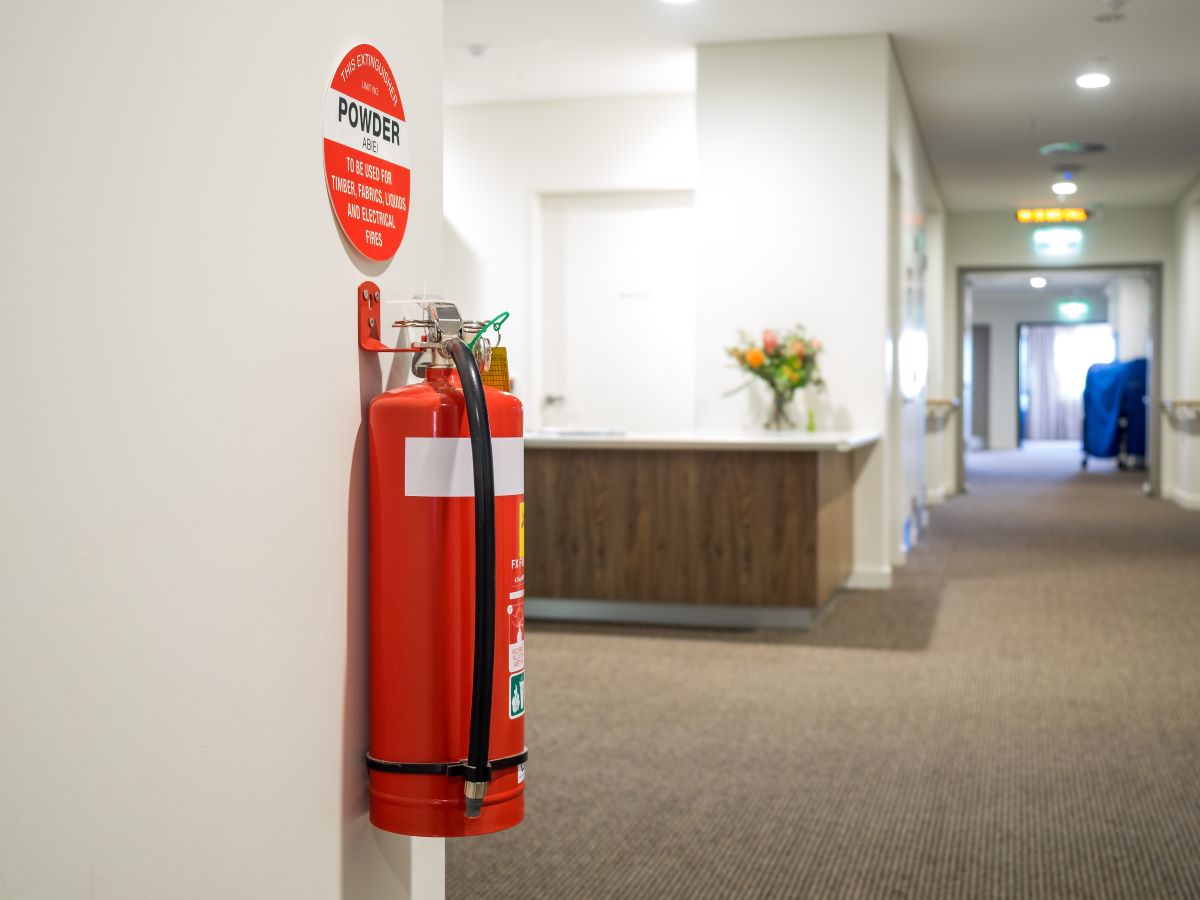
Fire extinguishers are the unsung heroes of fire safety, ready to leap into action when needed. However, their effectiveness hinges on their presence, strategic placement, and easy accessibility. In this blog post, we'll explore the importance of proper fire extinguisher placement and accessibility for a comprehensive fire safety strategy.
- Know the Fire Classes: Tailoring Placement to Risks
Understanding the nature of potential fire hazards in a given environment is the first step toward effective fire extinguisher placement. Fires are categorized into different classes, requiring a specific type of extinguisher. Here's a quick overview:
- Class A: Ordinary combustibles like wood, paper, and cloth.
- Class B: Flammable liquids and gases.
- Class C: Electrical fires.
- Class D: Combustible metals.
- Class K: Kitchen fires involving cooking oils and fats.
Tailor the placement of fire extinguishers based on the specific fire risks present in the area.
- Adhere to Regulatory Guidelines: Compliance is Key
Fire safety regulations provide guidelines on placing fire extinguishers in various settings. These guidelines are designed to maximize coverage and ensure quick access in case of an emergency. Familiarize yourself with local fire codes and regulations to ensure compliance.
- Consider the Fire Tetrahedron: Identifying Ideal Locations
The fire tetrahedron outlines the four elements necessary for a fire to occur: fuel, heat, oxygen, and a chemical chain reaction. When strategically placing fire extinguishers, consider the locations where these elements are present:
- Near potential fuel sources: Place extinguishers near areas with combustible materials or ignition sources.
- In proximity to electrical equipment: For Class C fires, situate extinguishers near electrical panels and equipment.
- Accessible to all occupants: Ensure extinguishers are within reach of all building occupants, including those with disabilities.
- High-Traffic Areas: Where People Converge
Place fire extinguishers in high-traffic areas where people will likely gather or pass through. This ensures that individuals can quickly locate and access the nearest extinguisher in case of a fire. Common high-traffic areas include:
- Entrances and exits: Near doors and exit points, ensuring easy access during evacuation.
- Hallways and corridors: Along pathways commonly used for movement within the building.
- Common areas: In spaces where people tend to congregate, such as break rooms and meeting areas.
- Tailor Placement to Specific Hazards: Addressing Unique Risks
Certain environments may have unique fire risks that require special consideration. Tailor the placement of fire extinguishers to address these specific hazards:
- Kitchens: Install Class K extinguishers in kitchens near cooking equipment. These extinguishers are designed for fires involving cooking oils and fats.
- Workshops and laboratories: Place extinguishers near areas with flammable liquids, gases, or combustible materials.
- Server rooms: Ensure the presence of clean agent extinguishers to protect sensitive electronic equipment.
- Clear Visibility and Accessibility: Remove Barriers
Visibility and accessibility are paramount when it comes to fire extinguisher placement. A clear line of sight and easy accessibility can make a significant difference in the early stages of a fire. Consider the following:
- Unobstructed view: Ensure that fire extinguishers are clearly visible and not obstructed by furniture, equipment, or other objects.
- Accessible height: Mount extinguishers at a height accessible to a wide range of users, including those with disabilities.
- Consistent Signage: Visual Cues for Quick Identification
Enhance the visibility of fire extinguishers by incorporating consistent and clear signage. Signage should include the type of fire extinguisher, its class, and usage instructions. This ensures that even in emergencies, individuals can quickly identify and use the appropriate extinguisher.
- Conduct Regular Reviews: Adapt to Changes
Environments are dynamic, and changes in layout, equipment, or materials can impact the effectiveness of fire extinguisher placement. Conduct regular reviews and update the placement strategy to adapt to changes in the environment.
Conclusion: Ready and Within Reach
Optimizing fire extinguisher placement and accessibility is critical to a comprehensive fire safety plan. By strategically stationing these firefighting tools, considering specific fire risks, adhering to regulations, and ensuring clear visibility, individuals and organizations can enhance their preparedness for potential emergencies. Remember, the goal is to have fire extinguishers present and ready and within reach, standing as vigilant guardians in the face of fire risks. Contact a Koorsen Fire & Security professional today to have them come take a survey of your space and let you know the best place for your fire extinguisher to go!


